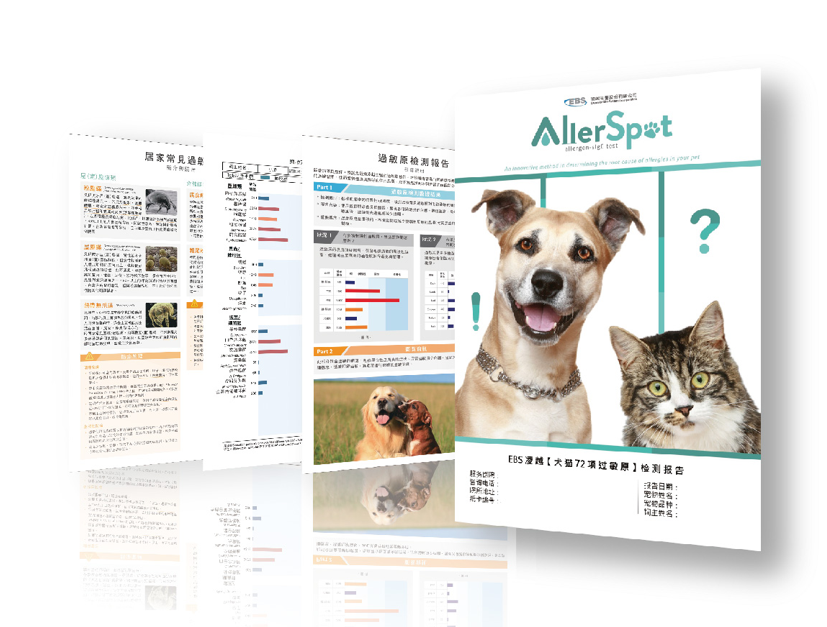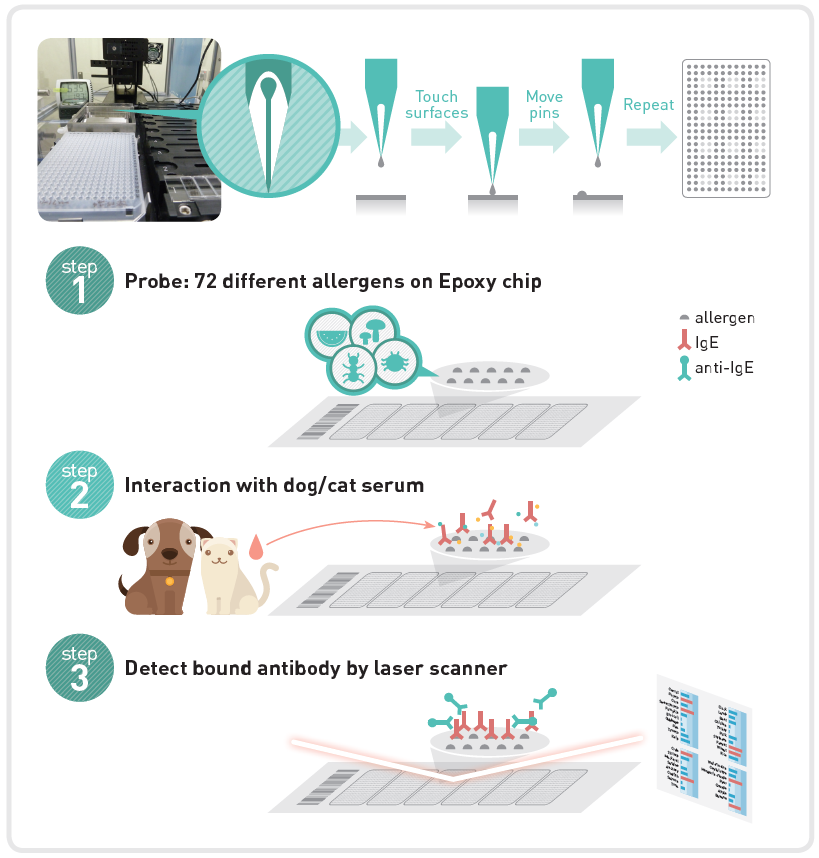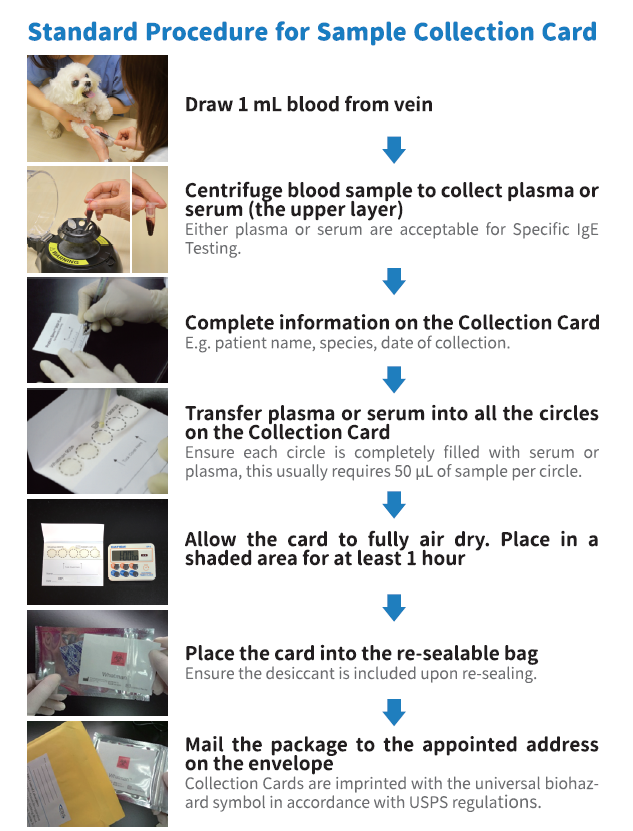AllerSpot® D/C 72 Specific IgE Screening Test

Allergic diseases in dogs and cats, such as Atopic Dermatitis and Atopic Syndrome, have been confirmed to result from multiple contributing factors, with a prevalence as high as 12.5%–15% (1)(2). In addition to allergens themselves, other causes include genetic predisposition, immune system imbalances, environmental conditions, diet, routines, and stress. These conditions are often lifelong and require medical intervention. From a pet care and management perspective, avoiding food allergens and minimizing exposure to environmental allergens are among the most effective ways for pet owners to improve their pets' quality of life on a daily basis.
(1)Y Drechsler. Canine Atopic Dermatitis: Prevalence, Impact, and Management Strategies. Vet Med (Auckl). 2024
(2)Bajwa J. Atopic dermatitis in cats. Can Vet J. 2018
What is an allergy?
Where do allergens come from?
We have better ways to deal with allergens.
Dog/Cat 72 Specific IgE Screening Test
Helping you identify the causes of your pet’s allergic reactions. The panel includes the following items:
Mite
• B. t mite • D. p mite • D. f mite • A. s mite • T. p mite
Fungi/Bacteria
• C. herbarum • C. albicans • A. alternata • P. notatum • A. fumigatus • M. pachydermatis • S. aureus
Insecta/Arachnida
• Black Ant • Tick • Flea • Mosquito • Cockroach
Pollen
• Eucalyptus • Kentucky blue grass • Pigweed • Sheep sorrel • Ragweed • Acacia • Bermuda grass • Paper mulberry
Hair/Epithelia
• Mixed feathers • Cattle epithelia • Goat epithelia • Cat dander/Dog Hair
Milk/Egg
• Cheese • Egg white • Egg yolk • Cow's milk
Yeast/Others
• Baker's Yeast • Brewer's Yeast • Flaxseed
Meat
• Duck • Lamb • Beef • Chicken • Turkey • Pork
Seafood
• Crab • Shrimp • Mackerel • Sardine • Anchovy • Codfish • Salmon • Tuna
Fruit/Vegetable
• Watermelon • Cantaloupe/Melon • Pear • Mandarin • Orange • Apple • Banana • Guava
• Carrot • Potato • Corn • Sweet potato • Pumpkin/Squash • Broccoli • Cabbage • Pea • Tomato • Seeweed
If food is suspected to be the cause of allergic symptoms, it is recommended to follow up with an elimination diet trial.
A cutting-edge and advanced technology platform.
Excelsior Bio-System has developed a diagnostic chip tailored to regional allergen profiles, covering 72 common allergens found in Taiwan. The technology works by immobilizing allergenic proteins onto a slide-based platform, serving as probes. Through the specific binding of antigens and antibodies, the presence of allergen-specific IgE in blood samples can be detected. The level of sensitization is then assessed using fluorescence signals.
EBS's allergen chip utilizes microarray technology, miniaturizing traditional ELISA reactions into a matrix smaller than 2.5 cm². This allows for high-throughput processing with minimal sample volume in a shorter time. Compared to the colorimetric readout of traditional ELISA, the fluorescence-based detection used by Excelsior provides significantly higher sensitivity.


Excelsior Bio-System will issue the test report within 5 working days after receiving the sample and send it to your clinic or the designated email address.
Important Notes
-
Timing of Blood Collection: For optimal results, it is recommended to collect the sample during the symptomatic period and before administering any medications. If medication has already been given, please be mindful of the required washout period.
-
Medication Washout Periods:
-
Short-acting systemic corticosteroids: discontinue for approximately 1–2 weeks.
-
Medium- to long-acting corticosteroids: discontinue for approximately 3–4 weeks.
-
Other immunomodulatory drugs such as Cyclosporine, Apoquel, Cytopoint, as well as topical treatments or antihistamines, generally do not require discontinuation.
-
If you are unsure, please contact our customer service hotline for further assistance.
-

